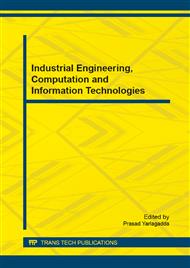p.891
p.895
p.902
p.907
p.911
p.919
p.923
p.927
p.935
A Novel File Hierarchy Access Control Scheme Using Attribute-Based Encryption
Abstract:
Attribute-based encryption (ABE) can keep data privacy and realize fine-grained access control. However, the notion of file hierarchy hasn't been presented until now. The problem, the multiple hierarchical files to be shared only using once encryption scheme, cannot be effectively solved. Based on the access structure layered model, a novel access control scheme about file hierarchy is proposed by using ABE to solve the problem. The proposed scheme will not only decrease the number of access structures to one, but also only require a secret key to decrypt all the authorization files. It is proved to be secure against the chosen-plaintext attack (CPA) under the decision bilinear Diffie-Hellman (DBDH) assumption. In addition, the performance analysis results indicate that the proposed scheme is efficient and practical when a large number of hierarchical files are shared.
Info:
Periodical:
Pages:
911-918
Citation:
Online since:
December 2014
Authors:
Price:
Сopyright:
© 2015 Trans Tech Publications Ltd. All Rights Reserved
Share:
Citation:


